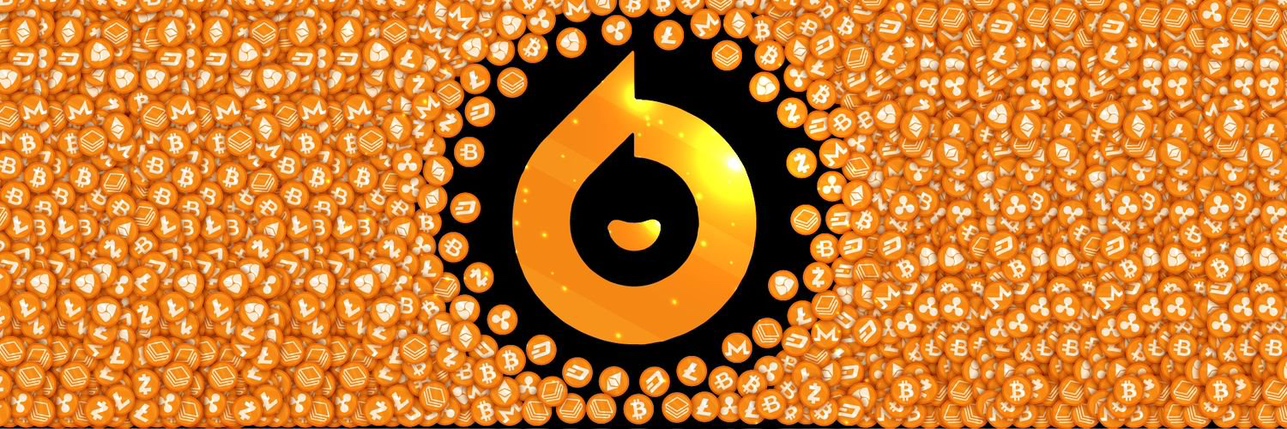
سعر TrueUSDTUSD
TUSD إلى محول AED
سعر TrueUSD الحالي اليوم بعملة AED
هل تعتقد أنّ سعر TrueUSD سيرتفع أو ينخفض اليوم؟
معلومات عن سوق TrueUSD
نبذة حول TrueUSD (TUSD)
معلومات حول TrueUSD
عملة TrueUSD (TUSD) هي أول عملة مشفرة ثابتة مرتبطة بالدولار الأمريكي وتخضع للإشراف الكامل من مؤسسات مالية حكومية وتدققها مؤسسات مستقلة بكل شفافية. صدرت في مارس 2018 برؤية تهدف لتوفير عملة ثابتة شفافة وآمنة. مع ازدهار سوق العملات المشفرة وعدم الاستقرار المتأصل في العديد من العملات الرقمية، كانت هناك حاجة متزايدة لأصل رقمي ثابت. وظهرت TrueUSD لسد هذه الفجوة.
شركة TrustToken هي الجهة التي تصدر عملة TUSD وهي معتمدة كشركة خدمات مالية من جهاز مكافحة الجرائم المالية في الولايات المتحدة الأمريكية. يُشرف على أموال الشركة وزارة الأعمال والصناعة في نيفادا قسم المؤسسات المالية. وعلاوةً على ذلك، تراجع مؤسستا Cohen Company وArmanino الضمان الخاص بعملة TrueUSD، وكلتاهما من أكبر مؤسسات المحاسبة حول العالم.
وعلى عكس العملات المشفرة مثل البيتكوين (BTC) والإيثيريوم (ETH)، التي تتقلب قيمتهما بدرجة كبيرة، فإن TrueUSD مرتبطة بقيمة الدولار الأمريكي. فمقابل كل TrueUSD قيد التداول، هناك مبلغ مكافئ من الدولار الأمريكي محتفظ به في حسابات الضمان. يضمن هذا الربط ثبات القيمة ويعزز الثقة بين المستخدمين.
ولكونها خاضعة بالكامل للوائح الأمريكية، تتبع TrueUSD جميع الإرشادات القانونية اللازمة. تضمن عمليات التدقيق المنتظمة من قِبل شركات خارجية سلامة العملة، مما يجعلها الخيار المفضل للمستخدمين الذين يعطون الأولوية للشفافية والأمان.
اجتذب ثبات TrueUSD العديد من المستخدمين، بما في ذلك المتداولين والشركات والمؤسسات المالية. وتُستخدم على نطاق واسع كزوج تداول في منصات تداول العملات المشفرة، وكوسيلة دفع حيث قد تكون الخدمات البنكية التقليدية بطيئة أو باهظة الثمن.
المصادر
الموقع الإلكتروني الرسمي: https://tusd.io /
آلية عمل TrueUSD
تستخدم TrueUSD طريقة تُعرف باسم «تحويل الأصول إلى عملات» لتمثيل عملة من العالم الحقيقي على البلوكتشين. فعندما يشتري المستخدم TrueUSD بالدولار الأمريكي، يتم الاحتفاظ بمبلغ معادل بالدولار الأمريكي في بنك شريك ائتماني محترف. يتم بعد ذلك إصدار عملات TrueUSD وإرسالها إلى المستخدم.
ويمكن استرداد TrueUSD مقابل الدولار الأمريكي مباشرةً. حيث يمكن للمستخدمين إرسال TrueUSD إلى العقد الذكي، ويتم إلغاء قفل الدولار الأمريكي المكافئ من حساب الضمان وإرساله إلى الحساب البنكي للمستخدم. يتم بعد ذلك حرق TrueUSD المقابل، مما يضمن ثبات الربط بنسبة 1:1.
يخضع تشغيل TUSD للعقود الذكية على بلوكتشين الإيثيريوم. تتولى هذه العقود الآلية إصدار العملات واستردادها بأمان. العملية بأكملها شفافة ويمكن تدقيقها في أي وقت، مما يضيف طبقة أخرى من الثقة.
تخدم TUSD وظائف مختلفة في النظام المالي. واستقرارها يجعلها خيارًا مناسبًا للتحوط ضد تقلبات الأصول الأخرى. كما تؤدي دورًا مهمًا في منصات التمويل اللامركزي (DeFi)، حيث تُعد وسيطًا ثابتًا لمختلف الخدمات المالية.
وعلى الرغم من نجاحها، فإن TrueUSD لا تخلو من التحديات. فقد يؤدي الاعتماد على الامتثال البنكي والتنظيمي التقليدي في بعض الأحيان إلى إبطاء العمليات. ويزعم المعارضون أيضًا أن المركزية في إدارة حسابات الضمان تتناقض مع الطبيعة اللامركزية للعملات المشفرة.
معلومات ختامية
لقد حققت TrueUSD مكانةً في عالم العملات المشفرة المتقلب من خلال تقديم أصول رقمية ثابتة وشفافة. وقد أدى امتثالها للوائح، إلى جانب القدرة على الحفاظ على ربط الدولار الأمريكي بنسبة 1:1، إلى اعتمادها والوثوق فيها على نطاق واسع. تؤكد العقود الذكية، وتحويل الأصول إلى عملات، وعمليات الاسترداد على آلية قوية تعزز فوائد البلوكتشين مع التخفيف من مخاطرها. ومع استمرار تطور مشهد التمويل الرقمي، قد يصبح دور العملات الثابتة مثل TrueUSD أكثر أهمية، مما قد يشكل مستقبل كل من الاقتصادات التقليدية والرقمية.
تقرير تحليل الذكاء الاصطناعي حول TrueUSD
سجل أسعار TrueUSD (AED)
 أقل سعر
أقل سعر أعلى سعر
أعلى سعر 
ما هو أعلى سعر لعملة TrueUSD؟
ما أعلى سعر لعملة TrueUSD؟
توقعات سعر TrueUSD
متى يكون الوقت المناسب لشراء TUSD؟ هل يجب أن أشتري أو أبيع TUSD الآن؟
ماذا سيكون سعر TUSD في 2026؟
في 2026، بناءً على توقعات معدّل النمو السنوي بنسبة +5%، من المتوقع أن يصل سعر TrueUSD(TUSD) إلى د.إ3.84؛ وعلى أساس السعر المتوقع لهذا العام، سيصل عائد الاستثمار التراكمي على استثمار TrueUSD والاحتفاظ بها حتى نهاية 2026 إلى +5%. لمزيدٍ من التفاصيل، يُرجى الاطلاع على TrueUSD توقعات أسعار لعملتي 2025 و2026، لعام 2030-2050.كم سيكون سعر TUSD في عام 2030؟
العروض الترويجية الرائجة
أسعار TrueUSD العالمية
كيفية شراء TrueUSD(TUSD)

أنشئ حسابًا مجانيًا على Bitget

تحقق من حسابك

تحويل TUSD إلى AED
الأسئلة الشائعة
ما هو السعر الحالي لـ TrueUSD (TUSD)؟
كيف تحافظ TrueUSD على استقرار سعرها؟
هل TrueUSD استثمار جيد في الوقت الحالي؟
أين يمكنني شراء TrueUSD (TUSD)؟
ما هي العوامل التي يمكن أن تؤثر على سعر TrueUSD؟
هل يمكن تحويل TrueUSD (TUSD) مرة أخرى إلى USD؟
ما هو حد العرض لTrueUSD؟
هل TrueUSD متاح للمشاركة أو كسب الفائدة؟
كيف أستطيع تخزين TrueUSD بأمان؟
ما هي الرسوم المرتبطة بشراء أو بيع TrueUSD في Bitget Exchange؟
ما السعر الحالي لـ TrueUSD؟
ما حجم تداول TrueUSD على مدار 24 ساعة؟
ما أعلى مستوى على الإطلاق لـ TrueUSD؟
هل يمكنني شراء TrueUSD على منصة Bitget؟
هل يمكنني تحقيق دخل ثابت من الاستثمار في TrueUSD؟
أين يمكنني شراء TrueUSD بأقل رسوم؟
أسعار العملات المشفرة ذات الصلة
أين يمكنني شراء TrueUSD (TUSD)؟
قسم الفيديو - التحقق السريع والتداول السريع!

TUSD إلى محول AED
مصادر TUSD
العلامات:
رؤى Bitget





تداول
Earn
TUSD/USDT
التداول الفوريأسعار العملات المُدرجة حديثًا على Bitget








